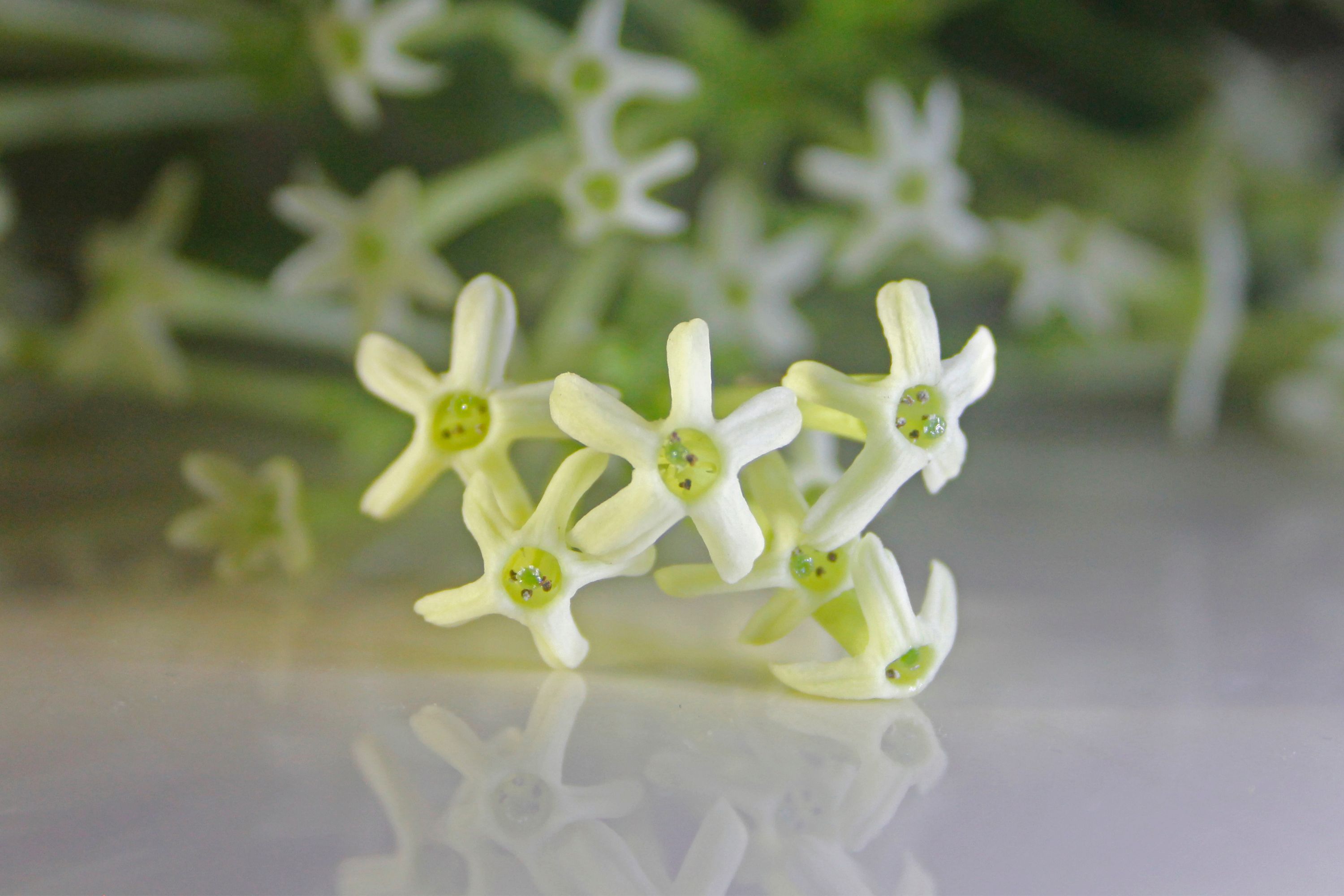Lady of the Night
(Cestrum nocturnum)

Description
Cestrum nocturnum, the lady of the night, night-blooming jasmine, night-blooming jessamine, night-scented jessamine, night-scented cestrum or poisonberry, is a species of plant in the potato family Solanaceae. It is native to the West Indies, but naturalized in South Asia. Cestrum nocturnum is an evergreen woody shrub with slender branches growing to 4 m (13 ft) tall. The plant is hairy with weak downy hairs and heavily foliated. The leaves are simple, narrow lanceolate, 6–20 cm (2.4–7.9 in) long and 2–4.5 cm (0.79–1.77 in) broad, smooth and glossy, with an entire margin. Towards the front they are pointed or tapered, the base is rounded or blunt. At first the leaves are finely hairy, but with age they become bald. The leaf stalks are 0.8 to 2 cm long. The flowers are greenish-white, with a slender tubular corolla 2–2.5 cm (0.79–0.98 in) long with five acute lobes, 10–13 mm (0.39–0.51 in) diameter when open at night, and are produced in cymose inflorescences. A powerful, sweet perfume is released at night. The mostly multi-flowered, drooping inflorescences are terminal or in the armpits. They are clustered, sparsely branched panicles, on the inflorescence axes of which there are herbaceous bracts. The five sepals are fused to form a bell-shaped, approximately 2 mm long calyx and have five pointed tips, which are slightly enlarged, ribbed and spiky on the fruit. The inside and outside of the calyx are finely haired. Cestrum nocturnum is grown in subtropical regions as an ornamental plant for its flowers that are heavily perfumed at night. It grows best in average to moist soil that is light and sandy, with a neutral pH of 6.6 to 7.5, and is hardy to hardiness zone 8. C. nocturnum can be fertilized biweekly with a weak dilution of seaweed and fish emulsion fertilizer. The mechanisms of the plant's putative psychoactive effects are currently unknown, and anecdotal data are extremely limited and include an aphrodisiac power. In a rare discussion of traditional entheogenic use of the plant, Müller-Ebeling, Rätsch, and Shahi describe shamanic use of C. nocturnum in Nepal. They describe experiencing "trippy" effects without mentioning unpleasant physical side effects. Rätsch's Encyclopedia of Psychoactive Plants also describes a handful of reports of ingestion of the plant without mentioning serious adverse side effects.
Taxonomic tree:







